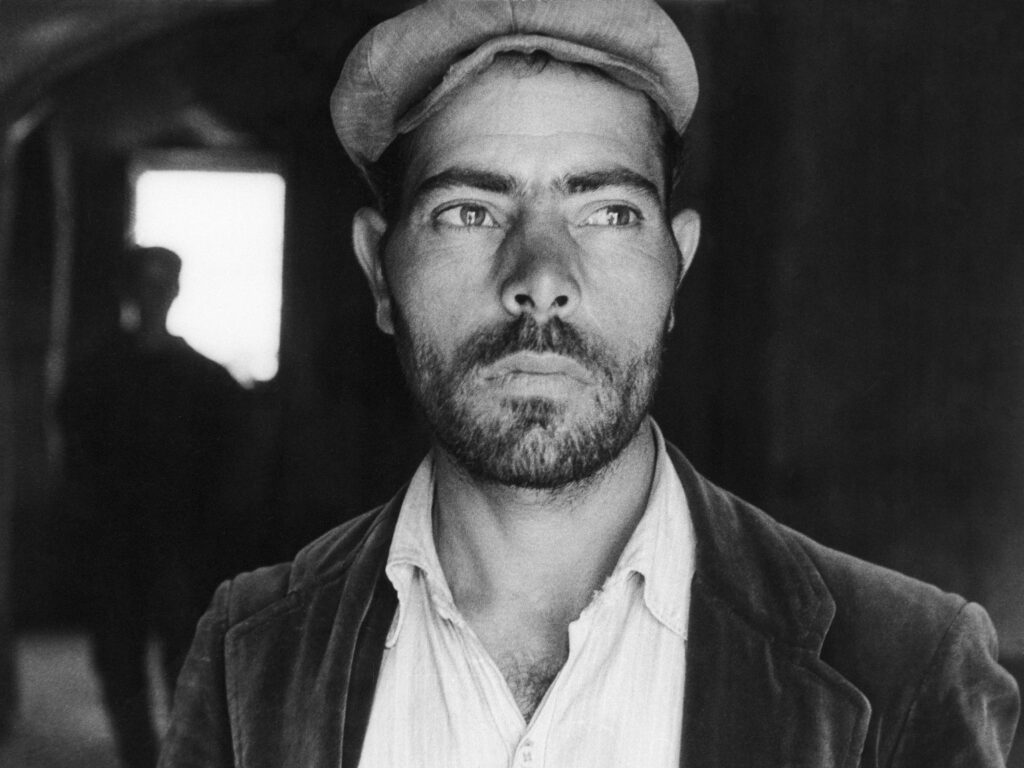
A rough-hewn study of survival in the highlands of Sardinia. Shepherd Michele (Michele Cossu, a nonprofessional and native of the region) ekes out a meager living with his brother until bandits arrive on the island and kill a policeman. Mistaken for a member of their gang and accused of murder, Michele must flee to the mountains where he’s driven to dire acts.
EN
“I vividly remember seeing Banditi at the New York Film Festival in the early 1960s. It was one of the most unusual and extraordinary films I had ever seen. [...] I remember being impressed by the style of the film. Neorealism had been taken to another level, where the director’s participation in his narrative was so total that the line between form and content was obliterated and the events dictated the form. De Seta’s sense of rhythm, his use of the camera, his extraordinary ability to merge his characters to their environment was a complete revelation. It was as if De Seta were an anthropologist who spoke with the voice of a poet.”
Martin Scorsese1
“De Seta spent nearly two years among the Sardinian peasants who play the roles, and he communicates their impassive suspiciousness toward authority; this is one of the rare films in which hard, taciturn people reveal themselves to us, and they do it without sentimentality.”
Pauline Kael2
- 1Martin Scorsese, “Banditi a Orgosolo: Film Notes,” Il Cinema Ritrovato, 23 June 2023.
- 2Pauline Kael, 5001 Nights at the Movies (New York: Holt, Rinehart and Winston, 1982), 50.
NL
“De mooiste ontdekking vond ik evenwel in de sectie Ritrovati e restaurati, met name het adembenemend mooie Banditi a Orgosolo (1961), de eerste narratieve langspeelfilm van Vittorio De Seta.
[De film] speelt zich af in de bergen van Barbagia, een droog, woest en verstild landschap waar zwijgzame herders eigen archaïsche wetten naleven in een cultuur die los wil staan van de moderne wereld. In deze film weet De Seta een nieuwe dimensie te verlenen aan het neorealisme, dat altijd al focuste op hoe personages zich in hun omgeving situeren.
Zijn documentaire oog voor de atmosferische transformaties, wisselende lichtomstandigheden en ondoorgrondelijke dieren in het landschap wordt volop gecombineerd met het dramatische potentieel van het bergachtige landschap in meesterlijke shotcomposities die de personages op verschillende manieren tegen de grillige horizon plaatsen.
Voorts weet De Seta zijn landschappen de tragische kracht en symbolische geladenheid te verlenen van de klassieke Amerikaanse westerns, met het Sardijnse binnenland als een last frontier, waarbij magistrale long shots van eindeloze horizonten en diepe kloven worden afgewisseld met intrigerende close-ups van het gelaat van de zwijgzame protagonist (Michele Cossu), dat dezelfde ruigheid, zwijgzaamheid en gravitas uitstraalt als het Sardijnse berglandschap.”
Steven Jacobs1
- 1Steven Jacobs, “3 x 3 Bologna: Il Cinema Ritrovato 2023,” Sabzian, 22 November 2023.

